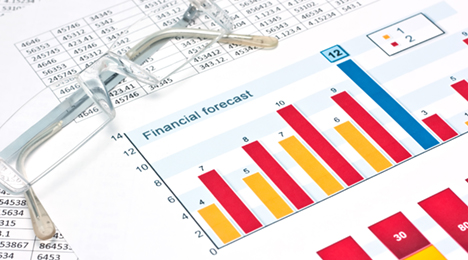Deep subprime used financing sinks to 9-year low

By subscribing, you agree to receive communications from Auto Remarketing and our partners in accordance with our Privacy Policy. We may share your information with select partners and sponsors who may contact you about their products and services. You may unsubscribe at any time.
SCHAUMBURG, Ill. –
Part of the dialogue happening at the recent SubPrime Forum during Used Car Week stemmed from whether or not finance companies — especially ones that specialize in subprime paper — were tightening their underwriting.
Furthermore, companies such as Consumer Portfolio Services had just discussed why their originations dipped during the third quarter.
Well, Experian’s latest State of the Automotive Finance Market report showed that perhaps underwriting in the subprime space is, in fact, tightening.
Experian’s Q3 data released on Monday indicated that financing extended to consumers in the subprime tier fell 4.5 percent from the previous year, and contracts to deep-subprime consumers dropped 2.8 percent to the lowest level on record since 2011.
Looking specifically at used-vehicle loans, analysts noticed that the subprime sectors saw an even larger decrease.
Financing to consumers with deep-subprime credit dropped by 5.3 percent to 5.11 percent; the lowest Experian has seen on record since tracking began in 2007.
Subscribe to Auto Remarketing to stay informed and stay ahead.
By subscribing, you agree to receive communications from Auto Remarketing and our partners in accordance with our Privacy Policy. We may share your information with select partners and sponsors who may contact you about their products and services. You may unsubscribe at any time.
Meanwhile, Experian senior director of automotive finance Melinda Zabritski — who discussed some of the Q3 data during the SubPrime Forum — pointed out that newly originated financing to prime borrowers jumped 2 percent to encompass nearly 60 percent of contracts financed in Q3.
“For anyone making doomsday predictions about a subprime bubble in the auto industry, Q3 2016 provides a stark reality check,” Zabritski said in a news release issued on Monday.
“This quarter’s report shows that lenders are reducing the percentage of loans to the subprime and deep-subprime risk tiers while increasing the percentage to consumers with good credit,” she continued. “The most important takeaway here is to understand the market reality and not to be led astray by rumors or unsubstantiated facts.
“By doing so, lenders, dealers and consumers are able to make smarter decisions and more easily explore financing programs and other opportunities available to them,” Zabritski went on to say.
The report also determined that average credit scores for both new and used vehicle loans are on the rise.
For new-vehicle contracts, the average credit score climbed two points to 712 in Q3, marking the first time average credit scores for new-vehicle loans rose since hitting a record high of 723 in Q2 2012.
For used-vehicle contracts, the average credit score jumped five points to 655.
Experian reported that 30-day delinquencies were flat year-over-year, at 2.36 percent. However, 60-day loan delinquencies were up slightly, moving from 0.67 percent in Q3 2015 to 0.74 percent in Q3 2016.
Beyond the subprime data, Experian highlighted that credit unions continued to gain market share as consumers search for low interest rates
Perhaps the biggest shift from Q3 2015 to Q3 2016 was the growth in market share for credit unions. Credit unions grew their share of the total loan market from 17.6 percent in Q3 2015 to 19.6 percent in Q3 2016.
For new-vehicle contracts, credit unions grew their share by 22 percent, going from 9.9 percent in Q3 2015 to 12 percent in Q3 2016.
According to the report, interest rate increases played a key role in helping boost credit union share. Interest rates for the average new-vehicle loan went from 4.63 percent in Q3 2015 to 4.69 percent in Q3 2016.
“Credit unions typically have the most competitive interest rates, so any time rates jump overall, it’s a natural reaction for credit unions to see a rise in their market share,” Zabritski said. “With vehicle prices and loan dollar amounts rising, car shoppers are looking for any relief they can get. Credit unions’ traditionally lower rates are obviously an attractive option.”
Other key findings for Q3 2016 included:
• Total open automotive financing balances reached a record high of $1.055 billion.
• Used-vehicle contract amounts reached a record high of $19,227, up by $361.
• The average new-vehicle contract amount jumped to $30,022 from $28,936.
• Share of new-vehicle leasing jumped to 29.49 percent from 26.93 percent.
• The average monthly payment for a new-vehicle contract was $495, up from $482.
• The average new-vehicle lease payment was $405, up from $398.
• The average monthly payment for a used-vehicle contract was $362, up from $360.
• The average contract term for a new vehicle was 68 months.


